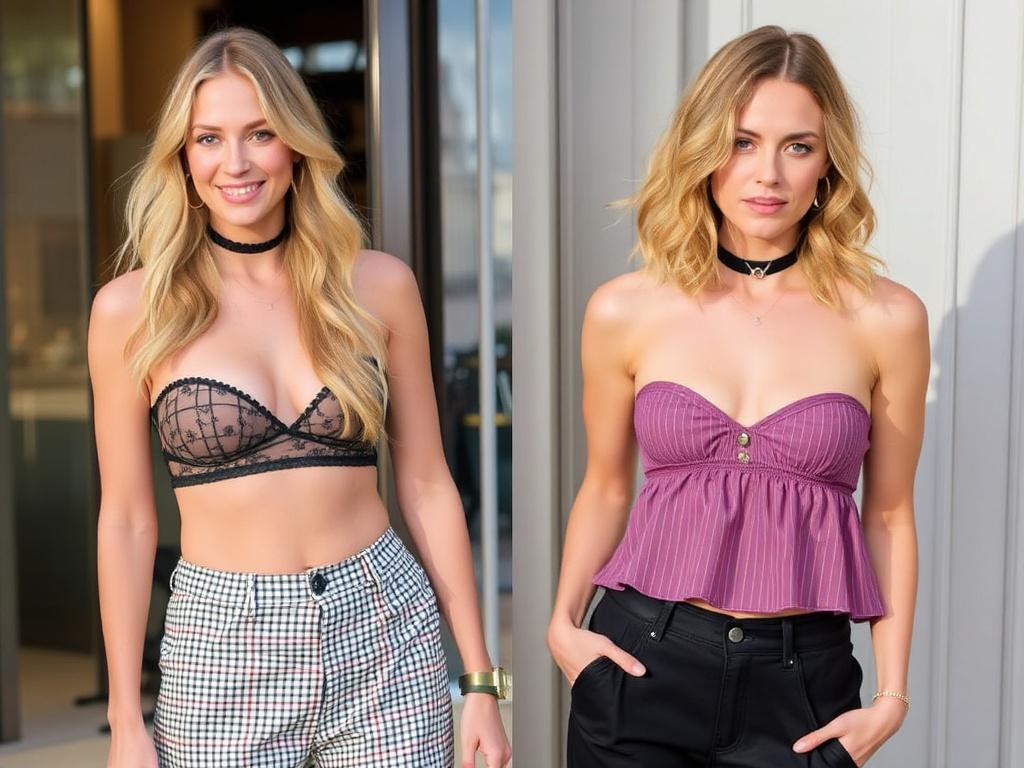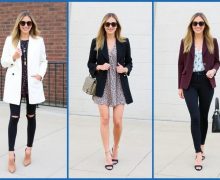SQLITE NOT INSTALLED
There’s a particular thrill in borrowing from the other side of the wardrobe. The blokette trend—women embracing and reshaping traditionally masculine garments—doesn’t feel like imitation. It’s more like translation: taking a structure, a silhouette, or an attitude and giving it a distinctly feminine voice. If you’ve ever slipped into an oversized blazer and felt unexpectedly powerful, or paired brogues with a slip dress and felt a new kind of balance, you’ve brushed up against this movement. In this article I’ll walk you through where blokette came from, how to shop and style it, which pieces to prioritize, and what this shift says about fashion, identity, and the way clothes carry meaning.
This is not a how-to list produced from a template. It’s an exploration, full of practical tips, cultural observation, and a few wardrobe experiments you can try tonight. I’ll include tables and lists to make shopping and styling easier, and break things down so you can adopt blokette as gently or as dramatically as you like. Let’s begin by defining the look.
What Is Blokette? A Definition and a Feeling
Blokette is shorthand for a look that blends masculine foundations with feminine accents. Think of it as an aesthetic marriage: menswear pieces—blazers, trousers, loafers, ties—reinterpreted through fit, fabric, or complementing elements that read as feminine. The word captures both the blocky, structured feel of menswear and the feminine suffix, implying a softer, curated translation rather than a straight copy.
The trend emphasizes contrast. A sharply cut double-breasted blazer might be worn over a lace camisole. Wide-legged trousers might be paired with a delicate heel. The point isn’t to neutralize masculinity or to romanticize it; it’s to explore the tension and harmony between two traditionally coded ways of dressing. That interplay is what makes blokette interesting and versatile.
Blokette is also behavioral. Wearing a men’s oxford shoe with a mini skirt changes how you move, how you sit, and often how you present yourself to the world. The garment’s history and connotations come with it, and playing with that history is part of the point. The trend exists on a spectrum: from subtle borrowing—like a boyfriend blazer fitted at the waist—to full-on androgynous statements where gender lines blur. There’s room for personal taste and cultural context within the movement.
Historical Roots: How Menswear Came to Influence Women’s Fashion
The exchange between men’s clothing and women’s wardrobes isn’t new. Women adapted elements of menswear for utility and autonomy long before fashion magazines called it daring. Sailors’ trousers, work shirts, and military jackets entered female wardrobes for protection and mobility. In the early 20th century, women began wearing suits as a symbol of modernity and suffrage. Coco Chanel borrowed from men’s tailoring to craft a relaxed, functional elegance for women that changed fashion forever.
By the 1960s and 1970s, icons like Marlene Dietrich, Yves Saint Laurent’s tuxedo “Le Smoking,” and later, Helmut Lang’s minimal tailoring, all signaled that power dressing could cross gender lines. The 1980s power suit—broad shoulders, sharp lapels—became a professional uniform for many women. Each era reinterpreted masculine motifs to reflect shifting social roles and aesthetic tastes.
Today’s blokette is a continuation and refinement of that history. It often looks more casual than a power suit and more deliberate than mere borrowing. The modern blokette wearer chooses menswear elements to create contrast, not to conceal femininity. It’s less about disguise and more about dialogue.
The Cultural Context: Why Blokette Resonates Now
Several cultural currents make blokette feel timely. Gender norms have loosened in many places; people feel freer to experiment with identity, and fashion is a front line for those experiments. The rise of thrift culture and the search for more sustainable shopping have also encouraged inventive mixing of hand-me-downs and vintage finds—where oversized blazers and classic men’s shirts are abundant.
Social media plays a role too. Street style and micro-trends spread quickly, and blokette benefits from that visual culture: influencers, stylists, and everyday dressers show how one blazer can be a dozen looks. The aesthetic’s adaptability makes it social media-friendly—easy to remix, photograph, and share.
Finally, the trend reflects a broader appetite for clothing that conveys complexity. People want outfits that tell stories: of practicality and softness, of tradition and reinvention. Blokette serves that narrative well because it’s inherently narrative—it juxtaposes two histories and invites interpretation.
Core Pieces: Building a Blokette Wardrobe
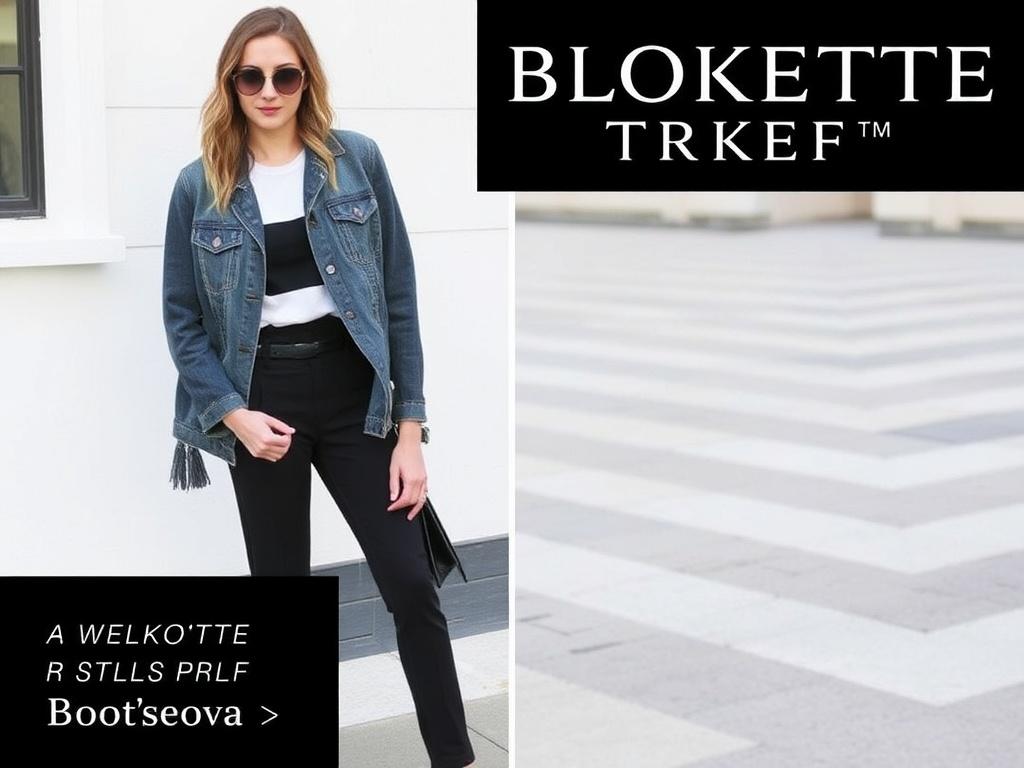
Start with a few reliable menswear pieces, and learn how to pair them with feminine elements. Below is a prioritized list of essentials and why each one matters. Follow this with a practical capsule table to visualize combinations.
- Oversized blazer — the quintessential blokette item; acts as structure.
- White dress shirt — versatile and crisp, it can be tied, cropped, or layered.
- Tailored trousers — choose high-rise options to emphasize the waist and elongate legs.
- Loafers or brogues — low, grounded footwear that contrasts with delicate fabrics.
- Menswear coat (peacoat or overcoat) — adds weight and creates silhouette contrast.
- Tie or thin neck scarf — tiny masculine touches that can be feminine toggle points.
- Boxy knitwear or sweater vest — cozy, layered, and timeless.
Every item should be thought of as a tool. The oversized blazer creates a strong shoulder line; a high-waisted trouser changes proportion and balance. Pair them with finesse and you’ll get looks that feel intentional rather than borrowed.
| Piece | Why It Works | Feminine Pairings |
|---|---|---|
| Oversized Blazer | Adds structure and authority | Lace camisole, belt at waist, mini skirt |
| White Dress Shirt | Neutral foundation; easy to manipulate | Cropped, knotted, or worn off-shoulder with satin slip |
| Wool Trousers | Clean lines and drape | Heeled mule, cropped length to show ankle |
| Brogues / Loafers | Grounded, classic footwear | Sheer socks, pleated mini skirt |
| Overcoat | Creates dramatic silhouette; layering piece | Slim dress underneath to emphasize contrast |
| Tie / Neck Scarf | Small masculine detail; adds visual interest | Thin chain necklace, bow, or draped scarf |
How to Prioritize Purchases
Not every blokette wardrobe needs to be expensive. Start with a great blazer and a versatile shirt; those two items will multiply your outfit options. Quality matters where fit and structure are important—shoulder seams, lapel shape, fabric weight. For shoes, choose a pair you can walk in; comfort ensures repeat wear. Save for a tailored coat if you live somewhere cold; that single investment will elevate everything beneath it.
Shopping strategy: buy fewer, better pieces for the structured items (blazer, coat) and experiment with less costly items (ties, scarves, socks, jewelry). Thrift and vintage are excellent sources for authentic menswear pieces with character and history.
Fit and Tailoring: The Small Adjustments That Make a Big Difference
Fit is the quiet hero of blokette. Menswear shapes were designed for male bodies; to read as deliberate on a feminine frame, certain adjustments are often necessary. Tailoring turns a borrowed suit into a signature look.
Start with shoulders. The blazer should feel slightly oversized but not swallow you. If the shoulders are too wide, have them narrowed. A small nip at the waist can transform a boxy silhouette without losing the intended slouch. Sleeve length is another critical detail—cropped sleeves reveal delicate wrists, and slightly pushed sleeves add casual charm.
Trousers benefit from hem adjustments. A longer, straight leg creates androgyny; cropped or cuffed hems show ankles and shoes, skewing the outfit more feminine. Waist alterations can bring proportion into balance: high rise emphasizes the waist, while a lower rise reads more masculine. Keep a tailors’ contact for quick fixes; it’s the best investment for making menswear feel personal.
| Problem | Tailoring Fix | Effect |
|---|---|---|
| Blazer swamps frame | Take in side seams, add waist darts | Preserves oversized look but adds definition |
| Shoulders too wide | Narrow shoulder width | Better silhouette, less boxy appearance |
| Sleeves too long | Shorten or create intentional bracelet-length | Shows wrist/accessories; prevents sloppy look |
| Trousers dragging | Shorten hem or taper slightly | Clean line; highlights shoes |
| Waist gaps in shirt | Add darts or alter buttons placement | Streamlines torso without overstretching fabric |
Measurements and Guides
Know your measurements before shopping. Here are the essentials to record: shoulder width (from seam to seam), chest/bust, waist, hip, inseam for trousers, and sleeve length. Carrying those numbers makes online shopping less risky and simplifies communication with a tailor. If you’re buying a men’s size, remember that the sizing system is different: a men’s medium might correspond to a women’s L depending on the brand, and shoulder fit usually determines whether the piece will work.
- Shoulder width: most important for jackets and blazers.
- Bust/chest: crucial when layering multiple garments.
- Waist: determines where pleats or tucklines will sit.
- Inseam: affects proportion and shoe exposure.
- Sleeve length: influences overall neatness; cuffed looks require precision.
Bring these measurements to a tailor for quick adjustments and ask for options—sometimes adding a single hook-and-eye at the waist or shortening the sleeve by an inch solves a lot. Tailors are collaborators in style; a good one understands proportion and can suggest small changes that dramatically improve the garment’s fit.
Styling Techniques: How to Layer Masculine and Feminine
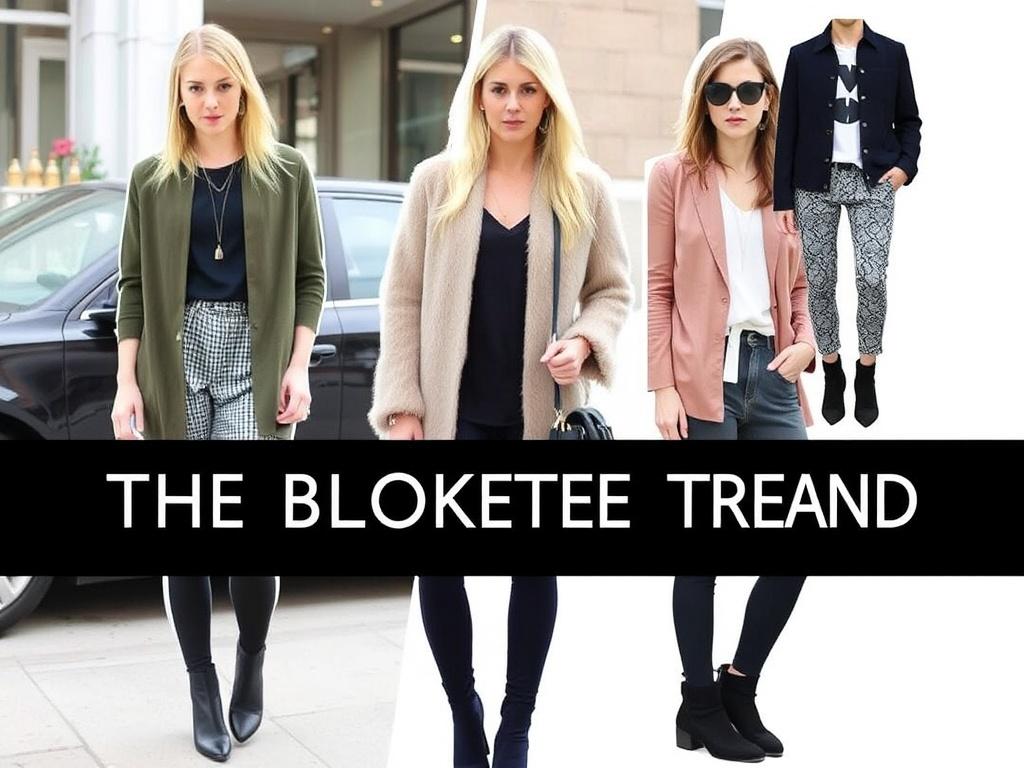
Blokette styling is about deliberate contrast. The easiest approach is to pair one strong menswear element with softer, feminine pieces. But to get interesting results, play with proportion, texture, and silhouette. Below are practical techniques you can try in any wardrobe.
1. Proportion Play
Use proportion to guide attention. If you wear an oversized blazer, offset it with a slim skirt or tailored trousers. Conversely, wide-leg trousers call for a fitted top or a cinched waist to prevent an overly heavy silhouette. The idea is to create intentional focal points—an exposed ankle, a cinched waist, a bare collarbone.
2. Texture Contrast
Textures speak loudly. Pairing rougher fabrics like tweed or wool with soft silk or lace introduces sensory contrast. A bow of velvet against a crisp cotton shirt can be more expressive than a bright color. Think tactile collage: brogues and tulle; flannel and satin; linen and cashmere.
3. Color and Print Balancing
Stick to a palette that complements the masculine pieces. Neutral menswear items often provide a calm base: charcoal, navy, camel, and white. From that base, bring in one or two feminine accents—rosy blush, candy pink, or a floral scarf. Prints can work, but keep scale in mind. Small florals paired with strong plaids can fight; choose one dominant print and use the other as subtle punctuation.
4. Jewelry and Small Details
Small details read as feminine even when the overall look is menswear-influenced. Delicate chains, pearl studs, a thin ankle strap, or a slim belt can shift the mood. Similarly, rolled sleeves with bracelets peeking out can soften a boxy blazer. These are easy experiments that alter energy without changing the garment.
5. Footwear Choices
Shoes often determine how an outfit is perceived. Brogues and loafers ground the outfit and add a cultured, bookish vibe. A low block heel or pointed pump converts the look to polished femininity. Sneakers make it casual; heels make it intentional. Consider heel height, sole thickness, and overall silhouette when deciding the emotional note you want to strike.
- For daytime: loafers + slip dress or midi skirt.
- For evenings: blazer + silk camisole + narrow heel.
- For office: tailored trousers + low heel or polished loafer.
- For casual: oversized shirt + denim + white sneakers.
Hair, Makeup, and Grooming: Completing the Look
Blokette isn’t just garments; it’s the full presentation. Hair and makeup choices influence whether a look reads as deliberately androgynous, romantically feminine, or somewhere in between. That said, there is no single rule. The goal is coherence: your grooming should complement the outfit’s intent.
If your blazer is oversized and boxy, a cleaned-up hairline—sleek ponytail or softly tucked bob—accentuates the outfit’s contrast. Soft makeup—dewy skin, a hint of blush—can emphasize femininity next to structured tailoring. Conversely, a bold lip can swing a look toward assertiveness, particularly when paired with minimal eye makeup.
Accessories like hairpins or headbands can act as feminine anchors. A low, undone bun with loose strands suggests nonchalance; a polished braid feels more deliberate. Grooming extends to manicures and nails: a neutral or bold polish color can be a small but effective statement.
Accessories and Small Touches That Signal Blokette
Accessories are where blokette shines because they let you play at scale: a tiny tie, a pocket square, a delicate watch. These elements are easy to swap and experiment with, and they drastically alter the outfit’s narrative.
| Accessory | Typical Masculine Role | Feminine Twist |
|---|---|---|
| Tie / Thin Neck Scarf | Formal neckwear | Tied as a choker or slim bow; paired with lace top |
| Watch | Functional, classic | Layer with thin bracelets; choose slim face |
| Pocket Square | Decorative suit detail | Use as hair scarf or belt detail |
| Belt | Utility and definition | Worn over blazer or dress to cinch waist |
| Brooch | Formal decoration | Pin to lapel above the heart for softness |
Consider the scale of accessories relative to your body and outfit. A chunky watch against a lace sleeve can look intriguing; a delicate chain with an oversized blazer brings subtlety. Small moves—like swapping a standard tie for a silk ribbon—deliver immediate personality without overwhelming the base garment.
Seasonal Blokette: How to Wear the Look Year-Round
Blokette adapts well to seasons, but each one asks for different fabrics and layers. Here are seasonal strategies that maximize comfort and style while staying true to the trend’s logic.
Spring
Spring is about lightweight layers. Swap heavy wool for linen-blend blazers; opt for cotton shirts and silk scarves. A blazer over a floral midi or a pleated skirt creates tension and freshness. Loafers or pointed flats work well when temperatures are mild.
Summer
In heat, blockte pieces should breathe. Choose unlined blazers, cotton shirts, and lightweight trousers with a looser fit. A men’s white dress shirt worn tied or knotted over a cami keeps the aesthetic but reduces bulk. Sandals with structured straps can balance the look without overheating.
Autumn
Autumn calls for texture. Tweed blazers, wool trousers, and leather loafers harmonize. Layer a jumper over a button-down and let the collar and cuffs peek out. Consider darker palettes—olive, burnt orange, deep navy—to echo the season’s tone.
Winter
Winter is about dramatic outerwear. Choose a strong overcoat with clean lines, wear it over a masculine blazer and a feminine knit to create visual depth. Boots—Chelsea or dress boots—work well. Don’t forget gloves and scarves; they’re opportunities for both utility and style expression.
Mix-and-Match Lookbook: Outfit Ideas for Every Situation
Below are concrete outfits you can assemble without a stylist. Each look pairs a core menswear item with feminine elements; descriptions include footwear, accessories, and why the pairing works.
| Occasion | Core Menswear Item | Feminine Pairing | Why It Works |
|---|---|---|---|
| Office | Single-breasted blazer | Silk blouse + tailored trouser + low heel | Professional structure softened by fluid fabric |
| Casual Weekend | Oversized white shirt | Denim shorts + ankle boots + statement belt | Relaxed but purposeful; shows intentional layering |
| Evening Out | Double-breasted blazer | Satin slip dress + strappy heel | High contrast; masculine jacket anchors delicate dress |
| Brunch | Boxy knit vest | Mini skirt + white button-down + loafers | Preppy, light, and gender-mixing |
| Rainy Day | Peacoat | Mid-length dress + Chelsea boots + umbrella | Sophisticated comfort with clear proportion |
Use these templates as scaffolding. The fun begins when you riff with fabrics, colors, and small details. A slip dress under a blazer doesn’t always need heels; chunky boots create an edgier statement. Try different shoes and notice how the narrative shifts.
Shopping Guide: Where to Find Great Pieces
Great blokette pieces are everywhere—from high street to high-end, from vintage racks to contemporary brands. The strategy is to mix and match price points: spend on items that define silhouette (blazer, coat), thrift for character items (vintage suit jackets), and experiment with lower-cost accessories.
- High street: affordable basics and contemporary cuts; look for structured blazers and simple loafers.
- Designer: invest here if you want timeless tailoring and quality fabrics.
- Vintage: unique cuts, patina, and often better-quality suiting; great for oversized blazers and coats.
- Thrift and consignment: treasure hunting yields unexpected finds—men’s shirts and trousers are often abundant.
- Specialty tailors: custom fits turn menswear into signature pieces.
Online shopping opens access to international sizing and cuts, but pay attention to measurements. When buying a men’s blazer, shoulder width dictates whether it will sit correctly. Read product reviews about fit and fabric weight. If you’re unsure, start with a less expensive blazer to learn how different cuts translate on your body before investing in a pricier one.
Budget-Friendly Tips
If you’re on a budget, focus on one statement outer layer and build around it. Alterations are inexpensive compared to high-end purchases but provide outsized returns. Use scarves, belts, and jewelry to pivot cheaply between looks. Finally, learn to layer creatively—one blazer can serve multiple styles throughout the week.
Sustainability and Blokette: How to Shop Responsibly
Blokette’s affinity for thrift and menswear staples makes it naturally compatible with sustainable practices. Menswear often lives longer because of durable fabrics and classic cuts, and reworking or borrowing pieces reduces waste. Here’s how to approach the trend with ecological responsibility in mind.
First, buy less and buy quality: invest in a single high-quality blazer rather than several trend-driven pieces. Second, favor natural fibers—wool, cotton, silk—over synthetic blends where possible for longevity. Third, embrace repair and tailoring. Fixing a hem or replacing a button extends life and keeps garments out of landfills.
Thrifting and swapping are also effective. Look for local vintage stores, online marketplaces, and clothing swaps. These sources often yield one-of-a-kind pieces with character. When you do buy new, seek brands transparent about their supply chains and environmental practices.
DIY and Upcycling: Turning Men’s Finds Into Blokette Treasures
Upcycling is a joy for blokette because men’s garments often have generous dimensions to work with. Minor tweaks can transform a thrifted jacket into a staple piece. Below are practical DIY ideas that require minimal sewing skills and deliver big results.
- Shorten sleeves: showing the wrist changes pace. Fold and tack or hem.
- Add a belt: cinch an oversized blazer to define waist with a leather or fabric belt.
- Replace buttons: swap plain buttons for mother-of-pearl or vintage buttons to feminize a jacket.
- Take in side seams: a simple alteration that preserves structure while creating shape.
- Convert a dress shirt into a cropped top: cut to desired length and hem; tie the ends for instant character.
- Patch with lace or embroidery: small inserts on cuffs or collars soften the look.
These projects are approachable. They let you personalize pieces and learn what proportions you prefer. Join local sewing groups or online communities for step-by-step help. Shared knowledge accelerates learning and builds confidence to alter more challenging garments over time.
Gender, Identity, and the Politics of Dress
Clothing communicates identity. The blokette trend participates in a larger conversation about gender and self-expression. For some people, it’s playful; for others, it’s a meaningful way to navigate gender presentation. The critical thing to remember is that fashion doesn’t have one correct reading—context matters.
Adopting masculine codes doesn’t erase femininity; it complicates it. That complexity can be liberating. By wearing menswear elements purposefully, you claim agency in how you present gender. The trend can also be politically charged—choosing menswear can be a statement about access, power, or critique of rigid gender expectations. But it can also simply be aesthetic and pleasurable. Both responses are valid.
Respectful engagement with gendered dress means acknowledging historical contexts and avoiding caricature. When borrowing from masculine style, consider the garments’ histories: military jackets, workwear, tuxedos—these items carry narratives of labor, ceremony, and social roles. Reinterpreting them thoughtfully adds depth to your styling choices.
Blokette Around the World: Regional Flavors
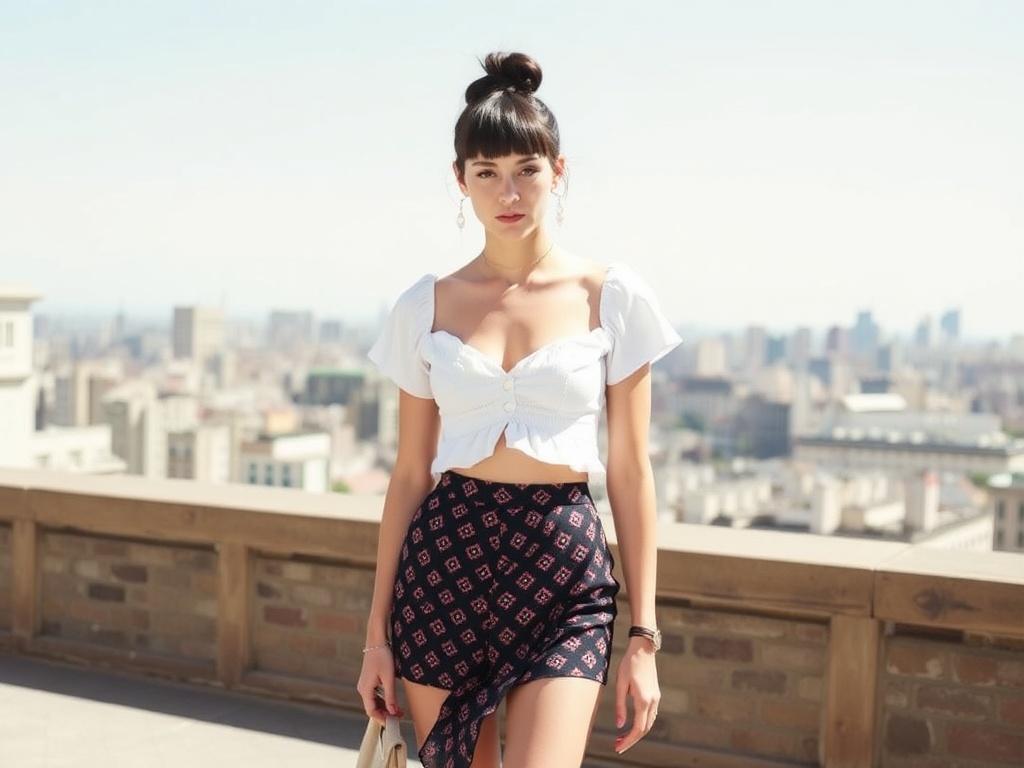
Where you live influences how blokette reads. In cities with a strong tailoring tradition—London, Milan, New York—menswear details may be more familiar and easily adapted. In warmer climates, blokette takes on lighter fabrics and more relaxed tailoring. In places where gender norms are strict, adopting blokette can be more subversive, potentially drawing attention or criticism.
Regional variations also stem from cultural tastes: Japanese streetwear, with its love of layered silhouettes, creates a different blokette than Parisian minimalism or Scandinavian clean lines. Consider local tailoring traditions, fabric availability, and climate when designing your wardrobe. Embrace local craft: a regional fabric or traditional technique can give a borrowed menswear piece a distinctly personal and place-based signature.
Mistakes to Avoid: Common Blokette Pitfalls
Blokette is forgiving, but a few recurring mistakes can undermine the look. Avoid these pitfalls to keep outfits intentional and polished.
- Overwhelming proportion: wearing oversized items top-to-toe without balance tends to look accidental rather than curated.
- Poor fit at the shoulders: the blazer shoulder is unforgiving—get this right, or the piece will look like a hand-me-down.
- Ignoring fabric seasonality: heavy wool blazers in summer read uncomfortable; thin linen suits in winter look insubstantial.
- Clashing scales: loud prints on both top and bottom can fight; keep one dramatic piece and the rest calm.
- Neglecting footwear: shoes finish the story. A mismatched shoe can confuse an otherwise cohesive outfit.
When in doubt, simplify. Remove one piece and see if the intent clarifies. The best blokette outfits usually feel like a few deliberate choices rather than a shopping cart emptied onto the floor.
Care and Maintenance: Preserving Your Pieces
Menswear fabrics often presuppose longevity. Wool and high-quality cotton benefit from proper care. Learn garment care symbols, invest in a good brush for wool coats, and store blazers on wooden hangers to maintain shoulder shape. Rotate your pieces to prevent wear concentrations, and use protective sprays on shoes to extend life.
Minor repairs are cost-effective. Replace worn linings, re-stitch hems, and polish leather regularly. Treat your wardrobe as a rotating collection; regular maintenance keeps pieces looking intentional rather than neglected.
The Future of Blokette: Trends to Watch
Blokette will continue to evolve as designers and wearers reinterpret masculinity and femininity. Expect to see more experimentation with proportion—extreme shoulders paired with ultra-feminine hems, for instance—and an increasing focus on sustainability and craft. Gender-neutral collections in mainstream brands will likely contribute to wider acceptance and more hybridized pieces designed from the start to be flexible in presentation.
Another direction is technological: fabrics that adapt to body temperature, or smart tailoring that incorporates stretch in strategic places. These innovations will make menswear elements more comfortable and therefore more appealing to a broader audience. Yet at its core, blokette will remain about contrast and reinterpretation—the pleasure of pairing an austere blazer with something unexpectedly soft.
Case Studies: Street Style Observations
Street style illuminates how people live with trends. Observing outfits in real settings reveals repeat patterns: blazers over slip dresses, men’s loafers with mini skirts, oversized shirts knotted at the waist. These combinations are common because they are flexible and comfortable. They also indicate that blokette lives across age groups; both students and professionals adapt the aesthetic to their lives.
Notice the smaller choices street style highlights: how someone rolls cuffs, the specific scarf knot they choose, the placement of a brooch. These micro-decisions are as important as the major pieces. They’re what transform a trend into an identity adaptation.
Putting It All Together: A 30-Day Blokette Challenge
If you want to internalize blokette, try a structured experiment. Commit to 30 days of small changes. Each week focuses on one technique so you can build confidence incrementally.
- Week 1 — Proportions: add one oversized menswear piece and pair it with a fitted feminine element each day.
- Week 2 — Textures: experiment with at least two contrasting textures per outfit (wool + silk, tweed + lace).
- Week 3 — Accessories: incorporate masculine accessories (tie, watch, pocket square) and give each a feminine twist.
- Week 4 — Tailoring and Fit: make small tailoring adjustments; note how silhouette changes affect perception.
Keep a daily photo log. Photos reveal pattern and preference faster than memory. After 30 days you’ll know which pieces you reach for, which tailoring adjustments matter most, and which combinations truly feel like you.
Final Thoughts: Why Blokette Matters
Blokette matters because it’s more than a fad. It’s a gesture toward complexity in an era that increasingly accepts nuance in identity and presentation. Through careful pairing, small alterations, and a willingness to play, blokette lets you borrow history and make it contemporary. It offers a vocabulary for expressing power and softness at once—an aesthetic and a practice.
Wear it lightly if you want to play. Wear it with gravity if you want to make a statement. Either way, the trend rewards curiosity. Its pieces are practical, its lines are classic, and its possibilities are expansive. Try one new combination today: a men’s blazer with something unexpectedly delicate. Notice how it makes you feel. Chances are, you’ll find a new way to walk through your day.
Helpful Resources and Next Steps
If you’re ready to dive deeper, here are practical next steps:
- Visit a local tailor and bring a blazer for a minor adjustment—see how small changes improve fit.
- Explore vintage and thrift stores for authentic menswear pieces—you’ll learn a lot by handling garments.
- Start a mood board of blokette looks you love—collect images of proportions and textures that speak to you.
- Practice the 30-day challenge and review your photos to refine your preferences.
Blokette is both gentle and radical: it’s an invitation to rewrite clothing codes, one outfit at a time. If you approach it with curiosity and a willingness to alter pieces to fit your body and taste, you’ll find a style that feels both familiar and new. Happy mixing.

